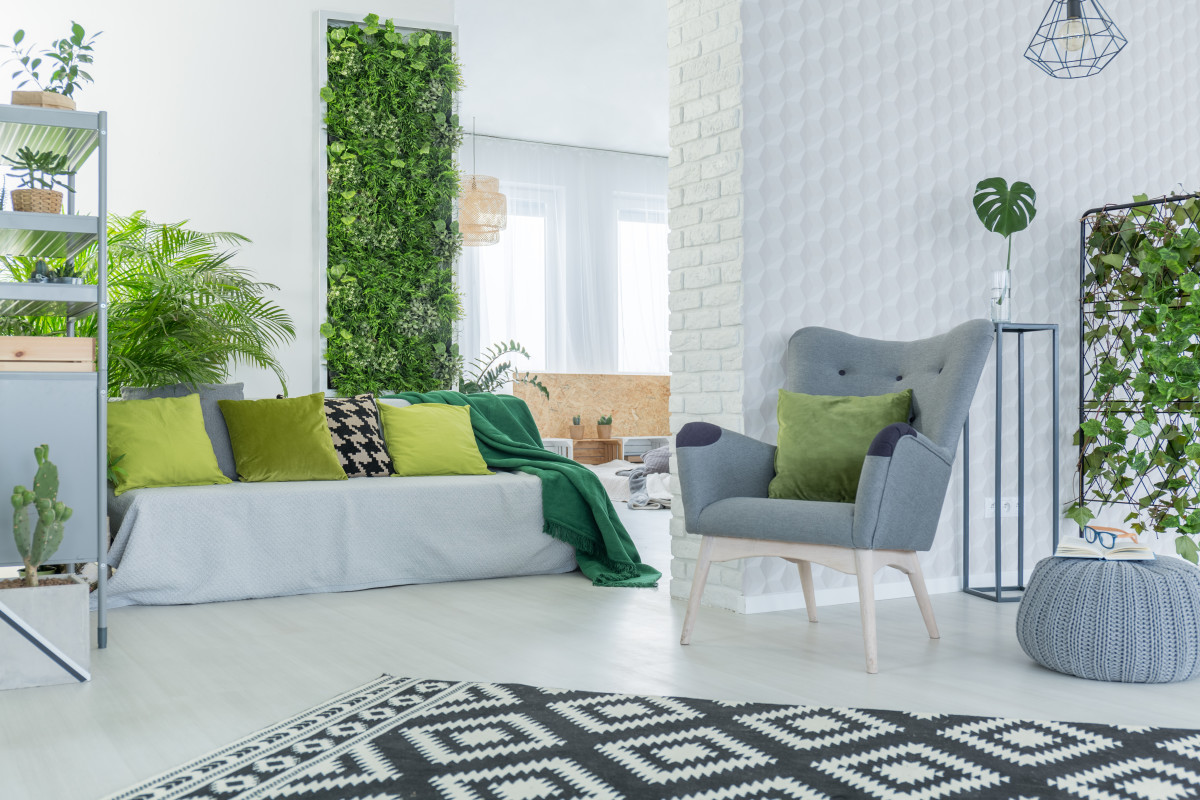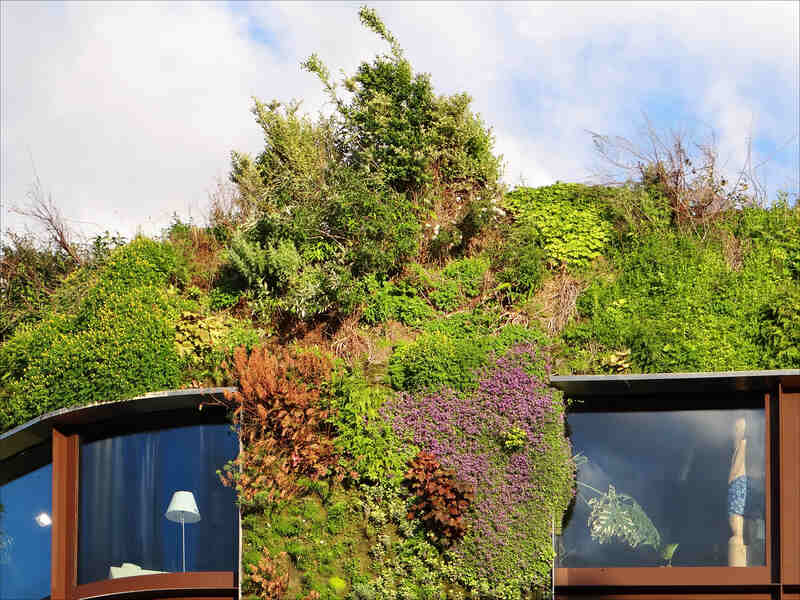A big party staple when I got into the party industry was the greenery wall. I keep thinking they’re going to go out of style… but it looks like they’re here to stay. Here’s the easiest way to make a greenery backdrop, with information on how I’ve built and used greenery walls multiple times throughout the years.
Greenery walls, also known as living walls or vertical gardens, have become increasingly popular for both residential and commercial spaces. Not only are they visually appealing, but they also have practical benefits like air purification, noise reduction, and insulation If you want to create a stunning greenery wall for your home or an upcoming event, it’s easier than you may think This guide will walk you through everything you need to know, from choosing plants and materials to installation and maintenance.
What is a Greenery Wall?
A greenery wall is a wall or structure covered in live plants The plants are rooted in a growing medium attached to the wall, rather than planted in the ground Greenery walls are also known as living walls or vertical gardens. They provide the beauty of a garden in a compact vertical space.
Greenery walls come in endless shapes, sizes and styles. You can create one indoors or outdoors using a freestanding backdrop frame or mounting directly on an existing wall. Small tabletop models to huge multi-story installations are possible. The design options are limited only by your imagination.
Benefits of a Greenery Wall
Beyond aesthetics, greenery walls offer many perks:
- Purify indoor air by absorbing toxins and releasing oxygen
- Insulate buildings, reducing energy costs
- Reduce noise pollution by absorbing and blocking sound
- Increase mental wellbeing with exposure to nature
- Require little horizontal space compared to a garden
- Can be installed in locations difficult to plant like patios
For homes and businesses alike, greenery walls are an eco-friendly design choice that boosts visual appeal and provides health and environmental advantages.
Greenery Wall Basics
While each greenery wall is unique, most share these basic components:
-
A vertical structure or frame that supports the weight of the plants and growing medium. This provides the “bones” of the wall.
-
A growing medium like soil, coconut coir, felt or foam that anchors and nourishes plants.
-
A drainage layer behind the growing medium, to prevent root rot from excess moisture.
-
An irrigation system to water plants, like drip irrigation tubing.
-
Hardware to mount the structure, like wall anchors and brackets.
-
A variety of small, shallow-rooted plants that thrive on vertical spaces.
How to Make Your Own Greenery Wall
Ready to DIY your own greenery wall? Follow these steps:
Choose a Location
Pick an indoor or outdoor spot that receives adequate sunlight and ventilation for your plants to thrive. Walls that face east or west are ideal. Consider easy access to a water source for irrigation.
Select a Frame
You can build a custom frame or purchase a premade system. Material options include wood, plastic panels, galvanized steel, modular boards and more. Consider factors like durability, weight, cost and aesthetics.
Add a Waterproof Layer
Line the back of the frame with plastic sheeting to protect the mounting surface from moisture damage. Staple the liner in place, trimming away excess.
Install the Irrigation System
Most systems use drip irrigation tubing or soaker hoses attached to a timer. Recirculating systems reuse water and are eco-friendly but expensive. Simple irrigation controlled manually or with a timer work well for small installations.
Choose a Growing Medium
Lightweight synthetic media like coconut coir, felt mats or foam boards are good for small home projects. Heavier options like soil or peat require stronger support. Make sure the medium adequately anchors plants but drains well.
Select Plants
Opt for small, shallow-rooted varieties that thrive vertically like ferns, succulents, herbs, trailing vines or air plants. Consult local nurseries for plants suited to your climate and sunlight conditions.
Plant and Install
Fill frames with growing medium, planting specimens spaced apart for airflow and growth. Mount finished frames securely to walls with hardware like wall anchors capable of bearing the weight.
Maintain the System
Test irrigation regularly and water sufficiently to keep plants moist. Fertilize according to plant needs. Prune back overgrown plants. Remove dead foliage. Replace spent growing medium annually.
With the right materials and plants, you can easily create a stunning, eco-friendly greenery wall to enjoy for years to come. Let your creativity run wild!
Helpful Tips for Greenery Wall Success
Follow these tips for the best results with your living wall project:
-
Choose lightweight frames and media to reduce stress on mounting surfaces.
-
Incorporate pest control elements like systemic granules into growing medium to deter bugs.
-
Install timers to automate irrigation so plants never go thirsty.
-
Place growing medium into liners or plastic sheets before inserting into frames to contain mess.
-
Angle frames slightly outward at the base for better drainage and air circulation.
-
Fertilize more heavily than normal since nutrients leach out faster from vertical growing.
-
Check for and repair leaks frequently to avoid damage from excess moisture.
-
Consider a recirculating irrigation system to conserve water.
-
Incorporate segments into massive walls to simplify installation and maintenance.
-
Place houseplants and greenery on mantels and shelves to test viability before installing a full wall.
With smart planning and care, a greenery wall can thrive for many years, enhancing your space with natural beauty. Let those creative juices flow and enjoy the process of crafting your own living art installation. Your walls will never look better!

Step 1: Choose a Structure
Your structure depends entirely on personal preference. You can use any of the above media with your choice of wooden or container structure.
Before you start your green wall installation, make sure the spot you’ve chosen gets enough sunlight for the plants you want to grow. If you’re making an indoor green space, keep in mind that you’ll most likely need some sort of artificial light source to keep your plants healthy.
Note: It’s a good idea to keep in mind the wall that you’ll be hanging your structure on in case of water damage. Make sure the surface won’t be damaged easily by your irrigation.
Origins of Green Walls
The concept of growing plants on walls has been around for thousands of years, but landscape architecture professor Stanley Hart White was the first to patent vertical gardens as we know them today. He had the idea way back in 1938, but it didn’t really grow on people until decades later.
In the 1980s and 1990s, a French botanist named Patrick Blanc began to popularize green wall systems as a method of urban agriculture. He sought to improve biodiversity in big cities with his massive living wall designs.
With the rise of Patrick Blanc, living green walls started popping up all over the place, in residential and commercial spaces, indoors and outdoors.

Note: Especially in the 2010s, with environmental sustainability rising to the forefront of public thought, these green garden walls became popular with businesses and homeowners alike.
Portable Boxwood Wall Backdrop
FAQ
How do you make a simple green wall?
The quickest and easiest way to create a vertical green wall is to jam plant pots into a pallet but they dry out very quickly and need very regular watering so I’ve re-used pieces plastic from old compost bags to create pouches holder larger volumes of soil.
How do you make a greenery background?
- Select an image First, choose the image you want to add a green background to by clicking on “Start from a photo”. …
- Let magic change the background ✨ Our tool automatically removes the background from your photo and turns it into green. …
- Download your image
How to hang greenery on a wall?
I love using gaffers tape to hang greenery on walls as it doesn’t leave a residue or damage paint or wallpaper. Gaffers tape is not very strong, so it’s only appropriate for attaching simple greens to a wall. I prefer to use a thin 1⁄2” size.
How do you grow greenery on a wall?
Pocket vertical garden bags are one of the best methods for a green wall because they are simple and effective. Once your vertical garden wall is built, you can enjoy this beautiful backdrop for years to come and add or remove plants as needed to keep it looking fresh.
Can you use a DIY faux greenery wall?
You can use a DIY faux greenery wall to create an indoor oasis that can provide a sense of relaxation to an otherwise stressful environment. Faux greenery wall decor isn’t just for the indoors! A DIY fake plant wall makes a statement as it greets your guests when installed next to your front door or on a covered porch.
How do you add greenery to a fake plant wall?
An artificial plant mat is a quick and easy way to add greenery to your DIY fake plant wall. Once the faux living wall is completely covered, add your silk flowers and other decor using floral pins and your hot glue gun.
How do I build a green wall?
Here’s 6 easy-to-follow steps to build a green wall for your home: 1. Find a good spot Scope out locations around your home that have close access to a tap, or another source of water that can be connected to pipes for irrigation. Check the wall’s position and how many hours of sunlight it will get during the day.
What is a fake greenery wall?
What Is a Faux Greenery Wall? A fake greenery wall is a vertical garden system that uses interlocking artificial plant panels to form a decorative display. They are typically assembled in sections and attached to a wall or other surface.
How to water a green wall?
Setting up irrigation pipes and connecting them to a water source will make it super easy to water your green wall and keep it green. We suggest you select an automatic timer system or a tap timer which are both available from local gardening and hardware shops. You can always water by hand if you want to avoid setting up an irrigation system.
Can you make a fake plant wall?
When you make an artificial greenery wall full of faux plants and garlands, you can flex your decorative skills to create a unique focal point for your space. If you want something more than a standard piece of wall art to liven up a room, keep reading to learn how to make a fake plant wall. Article Contents: What Is a Faux Greenery Wall?
